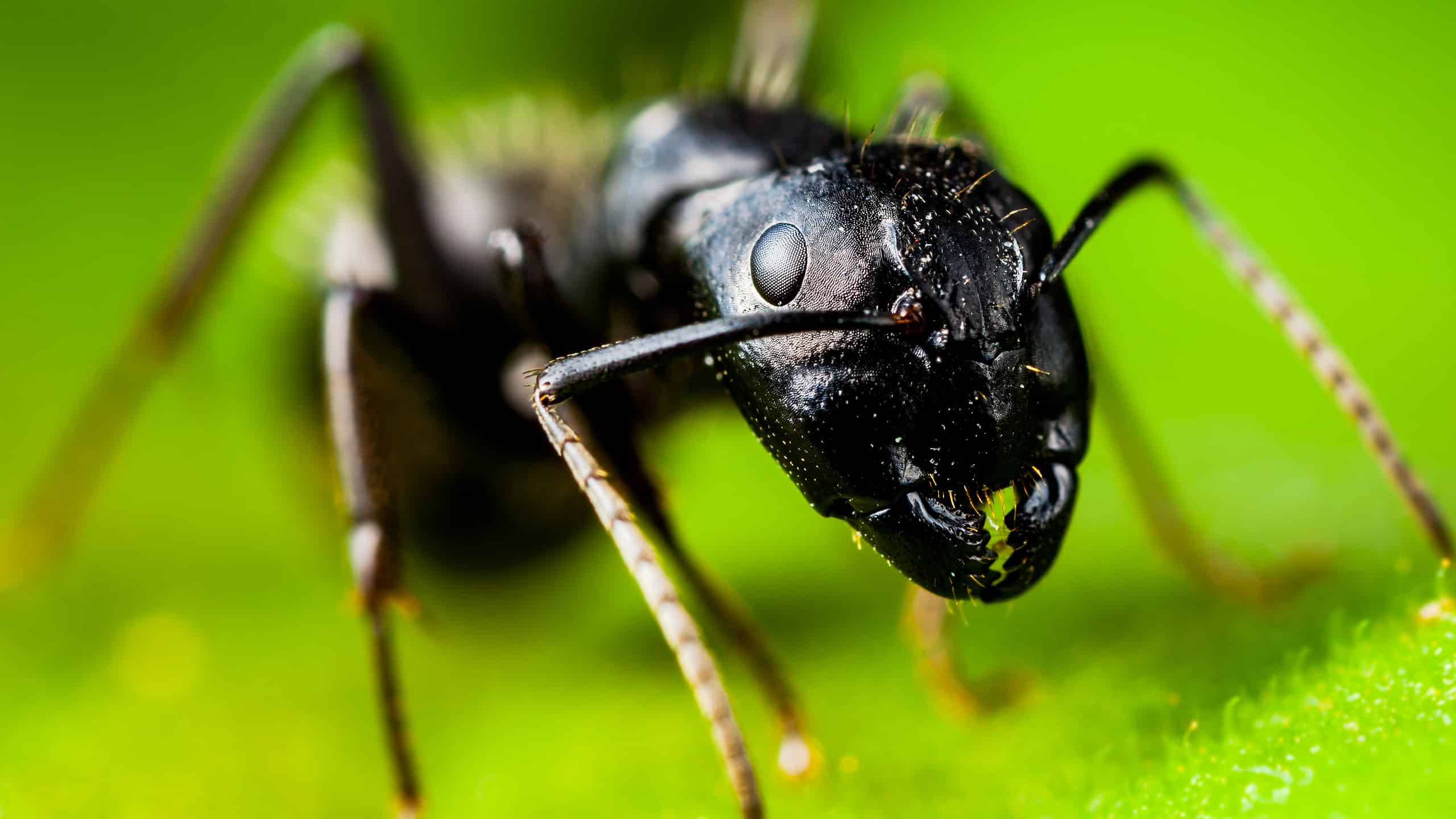They’re sometimes so tiny you don’t even notice them. Sometimes they find a way to put something sweet in your kitchen and become a nuisance. And sometimes they bite! But the world of ants is complex and exciting — so much so that they’re constantly being studied to determine if they can accomplish certain tasks like swimming. Learn more about ants that can swim and what the ones that cannot do when caught in the water!
Can Ants Swim?
An ant’s most remarkable ability is its foraging ability which is well complemented by its incredible work ethic. But yes, some ants can swim! Although some ant species can dive, doggy paddle, and float, most ant species do not have the ability to swim. Despite this, however, their bodies are a bit water-repellant. It’s not to say that their exoskeletons completely repel water, but even a lone ant’s body can trap some tiny air bubbles, allowing it to repel water a little bit.
Which Ants Can Swim?
Black Carpenter Ant
Scientific name: Camponotus pennsylvanicus
Black carpenter ants are impressive swimmers. The University of Louisville’s biology department led a study that compared the black carpenter ant’s swimming ability to another similar ant. Evan G. Gora, Ph.D., conducted a study that determined two primary factors that allow the black carpenter ant to swim well. The first is that this ant has long forelegs. The second is that its velocity is naturally more advanced due to its innate muscle mass.
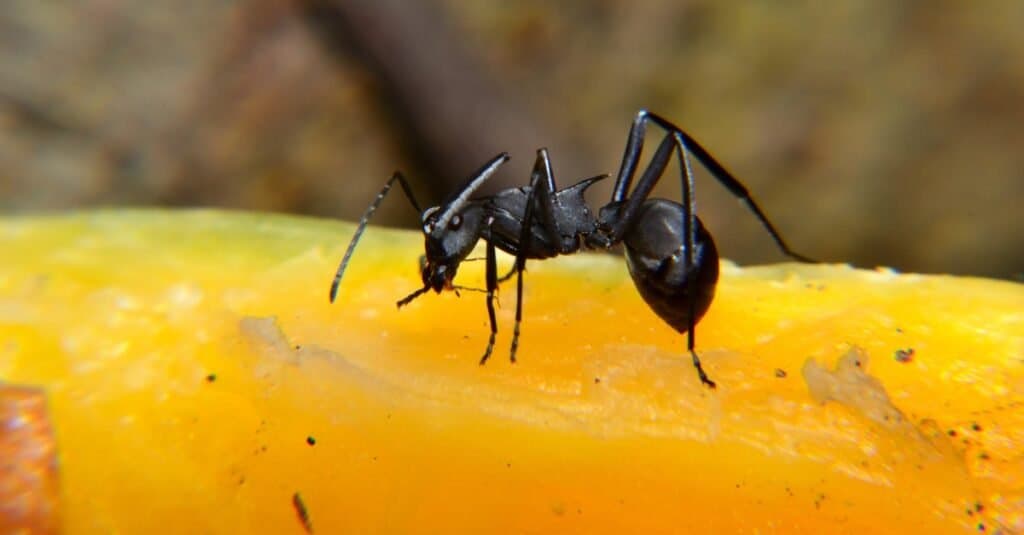
Black carpenter ants are excellent swimmers!
©Kras_Stock/Shutterstock.com
Silky Field Ant
Scientific name: Formica subsericea
The silky field ant was the second of the two ants explored in Dr. Gora’s study. Although it demonstrated an ability to swim, it was not nearly as adept at the activity as the black carpenter ant. He explains that these ants don’t depend on an ability to float but use their legs as they do on land, adjusting their movements to travel through water.

Silky field ants use their legs as they do on land.
©Pascal Guay/Shutterstock.com
Diving Ant
Scientific name: Colobopsis schmitizi
Diving ants are perhaps the most aggressive of the bunch. These ants literally dive into pools of water inside plants in their quest for meaty insects. Unlike black carpenter ants and silky field ants that can swim if they need to but don’t make it a part of their daily practices, diving ants are exceptional swimmers. They’re the most aquatically skilled type of ants since their food source is found hiding in carnivorous pitcher plants.
Trap-Jaw Ant
Scientific name: Odontomachus bauri
Trap-jaw ants have a unique swimming style. When they’re on a body of water, they position one of their back legs in just a way that keeps them afloat while they employ their middle and forelegs as paddles to steer them over to their destination. They have impressive endurance and can make it across larger bodies of water, unlike the diving ant, which keeps to a much more contained area. Their natural environments include water as well as land and trees.
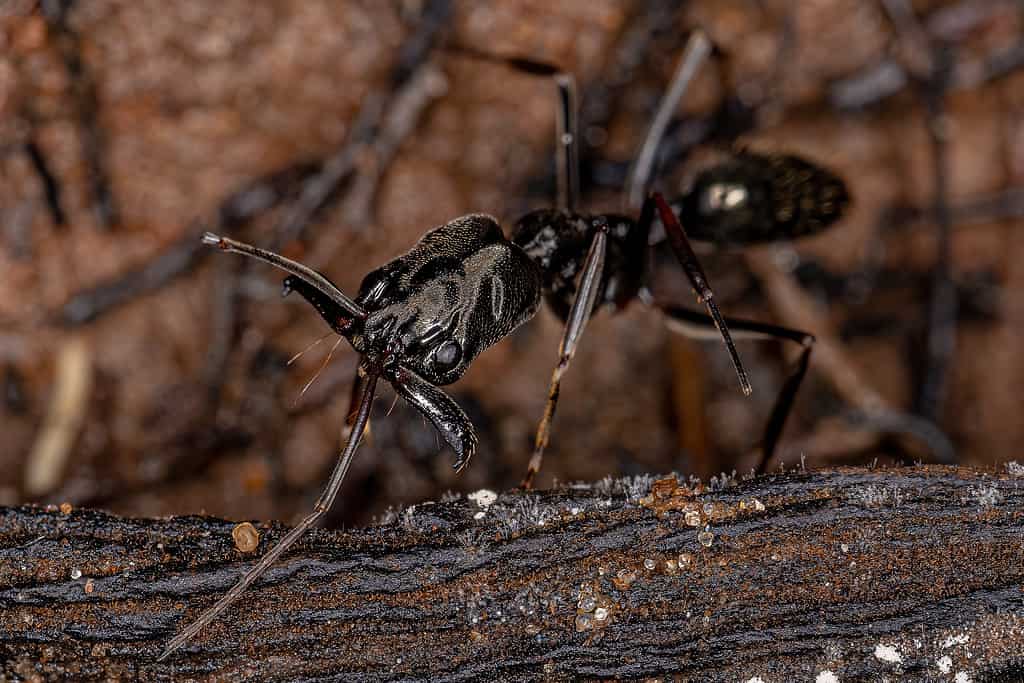
Trap-jaw ants have a unique swimming style.
©iStock.com/ViniSouza128
Gigantiops
Scientific name: Gigantiops destructor
Gigantiops are also fantastic swimmers. These ants are just as good at swimming as trap-jaw ants, and they only move a bit quicker. They swim in a similar style as well, using their hind legs to keep stable while their mid and forelegs ensure their speed and direction.
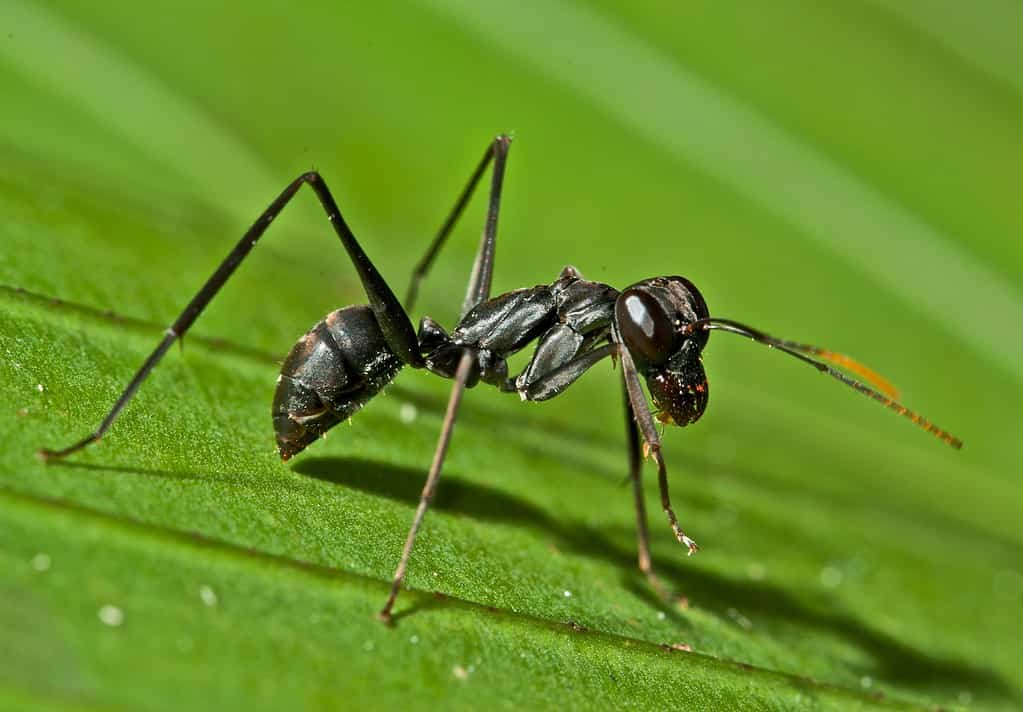
Gigantiops are also fantastic swimmers!
©Pedro Bernardo/Shutterstock.com
Hairy Panther Ants
Scientific name: Pachycondyla villosa
Hairy panther ants aren’t the best swimmers, but when caught in a pickle, they move as their lives depend on it. They can get out of a sticky situation by swimming to prevent themselves from drowning and will often look for debris or something they can grab hold of to get out of the water quickly.
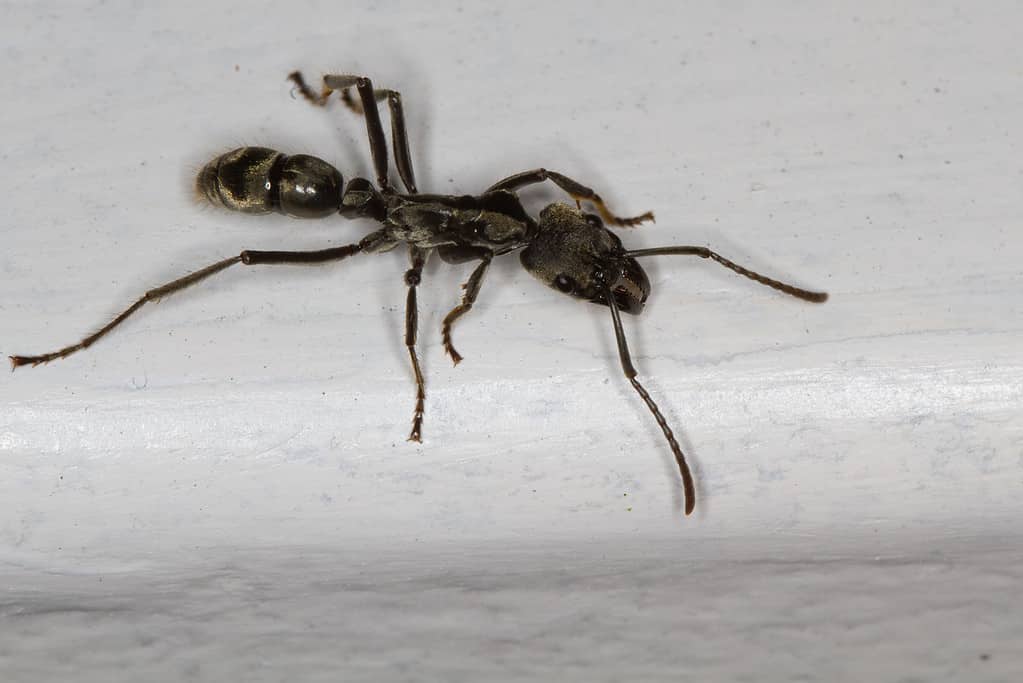
Hairy panther ants aren’t the best swimmers, but they can manage the situation if they fall in the water.
©Elliotte Rusty Harold/Shutterstock.com
Which Ants Cannot Swim but Float?
Fire Ant
Scientific name: Solenopsis
Fire ants work collaboratively when it comes to survival on water. They do not know how to swim, but they do know how to get together and float. In a way, they build a raft, locking their tiny legs and mandibles together to stay close and connected. This isn’t a desperate attempt at survival either — it’s calculated and careful, as the ants are conscious of not hurting one another. In minutes, thousands of tiny ants can come together to create a raft as they navigate their way to dry land.

Fire ants do not know how to swim, but they do know how to get together and float.
©NOTE OMG/Shutterstock.com
More Facts About Ants
Ants Don’t Have Lungs
There’s just not enough space in an ant’s body for a full-on respiratory system that includes lungs. They still breathe, though. They use their spiracles to pull in oxygen which then travels through a network of tubes inside their bodies.
Ants Are Stronger Than You Think
You’ve probably seen an ant carrying something around, but you may not recognize what it’s doing unless you pause and look closely. Ants can lift up to 50 times their body weight, with some species like the Asian weaver ant able to handle double that!
Thank you for reading! Have some feedback for us? Contact the AZ Animals editorial team.

